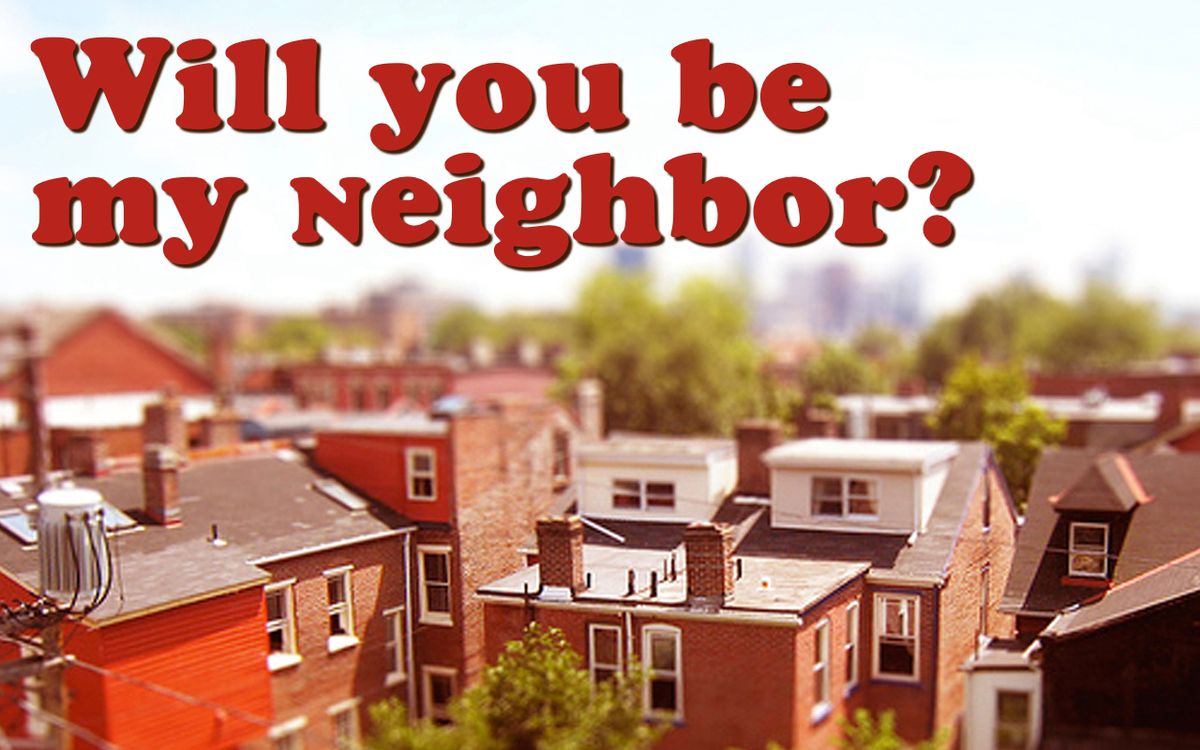Will you be my neighbor?
Ann Arbor needs 8,000 to 10,000 new units of housing. We need to change our zoning to allow for gentle density in our existing neighborhoods, building "the missing middle" — duplexes, triplexes, quadplexes, etc.

Recently, I attended a City Council meeting where my neighbors came to voice their opposition to the new map overlay, TC1. TC1 hopes to create new dense developments in the city along transit corridors. These neighbors expressed their concerns over the changing landscape of Ann Arbor, highlighting building heights, densities, and the "types" of people who might move into these new developments. The comments could be summed up under the guise of changing the "neighborhood character" of Ann Arbor.
Speaker after speaker used everything in their arsenal to reject this map overlay amendment. They said that Ann Arbor was not Detroit. They said that Ann Arbor is a funky artist haven, and these greedy developers will ruin the vibe. They talked about their tax values. They talked about parking on "their" street. They talked about how these future developments would be so high as to blot out the sun. Some neighbors were so bold, without any sense of shame, and said, "Ann Arbor was closed." Then my neighbors started to use dog whistles in their comments to block the amendment change, which prompted me to tweet:
I’m still processing hearing my neighbors use dog whistles about Ann Arbor. Like Ann Arbor is full move to Detroit. Or hearing my neighbors say to #a2council, we hold these exclusionary views & we elected you to enact them through policies & laws. Not much has changed after all. pic.twitter.com/rATnmwlxH7
— Donnell Wyche (@donnell) November 11, 2022
In my tweet about the issue, I also shared an article from 1970 that reflected similar sentiments. Ann Arbor has been having the same conversation for the past 50 years. "Is there space in Ann Arbor for everyone?" In 1970, the answer was no, especially not for "the Nergos." Residents at the council meeting then suggested that their elected officials restrict plots to 1 acre in hopes of excluding black people from the city. 50 years later, we are still debating the same issues. To say that Ann Arbor is progressive, welcoming, inclusive, and equitable seems more like an aspiration than a reality.
My neighbors concluded their comments by using the duplicitous phrase, "neighborhood character." On the surface, the phrase evokes emotion and the vague sense of community that comes along with geographic proximity—visions of kids playing in the street, neighbors greeting each other on the stoop, sharing resources, and looking out for each other. In this beatific vision, greedy developers are unleashed to destroy this treasured possession. When this phrase, "neighborhood character," is invoked, the speaker often speaks from their nostalgia—this desire that Ann Arbor would remain a small, quaint, eccentric Midwestern town. But really, it is a dog whistle. It's flowery language designed to conceal its true intent: racism, classism, and other forms of discrimination, the freezing of a place, the lock-in of its value to the current occupants, and the goal of excluding others.
But as the article from 1970 pointed out, given the nature of the University of Michigan, its role as a leading institution of higher learning and research center, and Ann Arbor's growing tech scene, it is impossible for Ann Arbor to remain a small quirky Midwestern town.
Instead of neighbors working together to exclude others, we need to embrace growth and change rather than trying to hold on to a romanticized notion of the past. We need to change our zoning to allow for gentle density in our existing neighborhoods, building "the missing middle" — duplexes, triplexes, quadplexes, etc. This type of housing already exists in our neighborhoods, but if we make it "by right" in all our residential zoning, we can see real, gradual changes in housing stock and affordability. Especially because Ann Arbor needs 8,000 to 10,000 new housing units to keep pace.
As Mr. Rogers said, "Will you be my neighbor?"